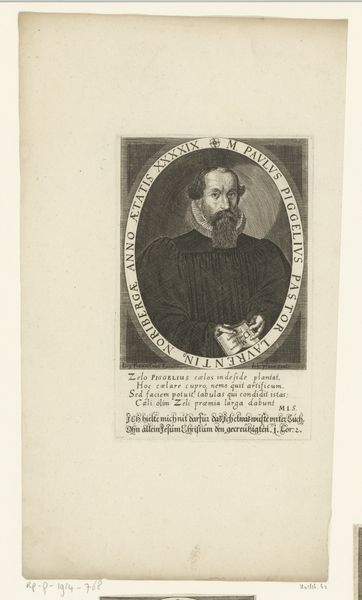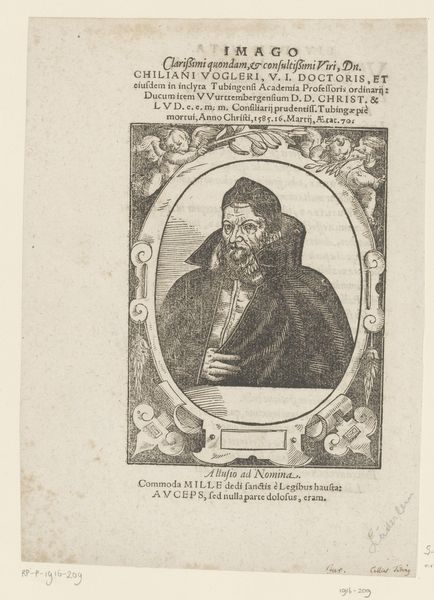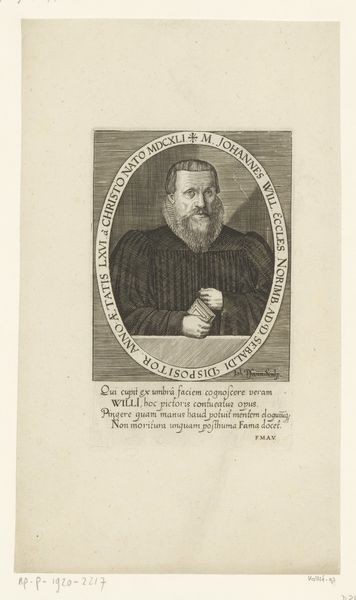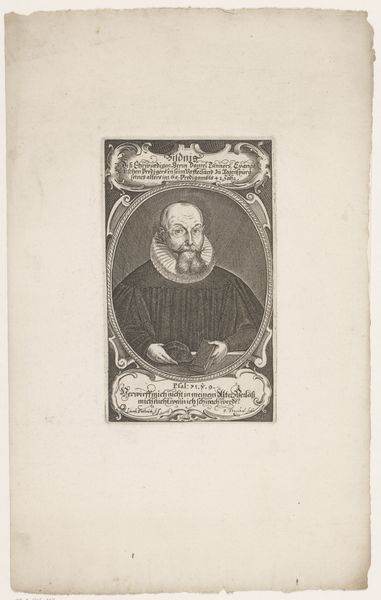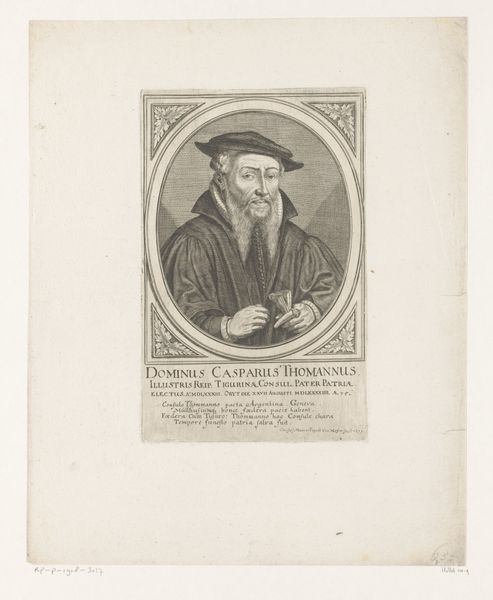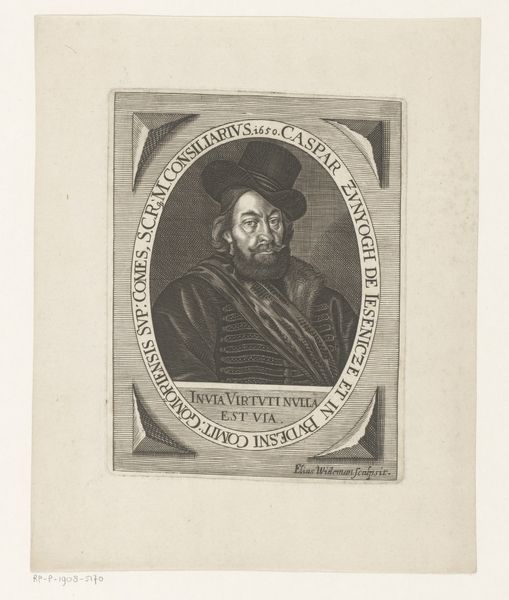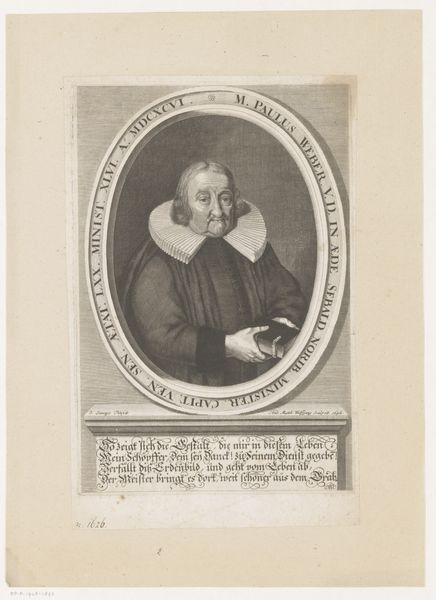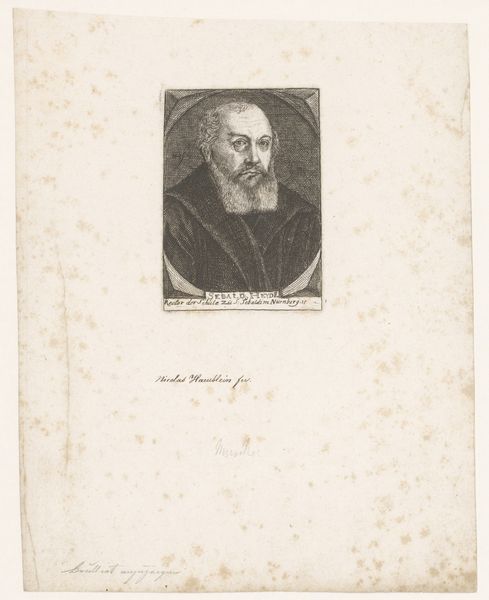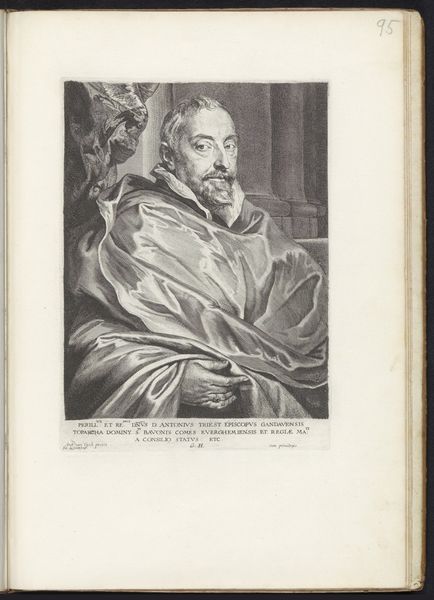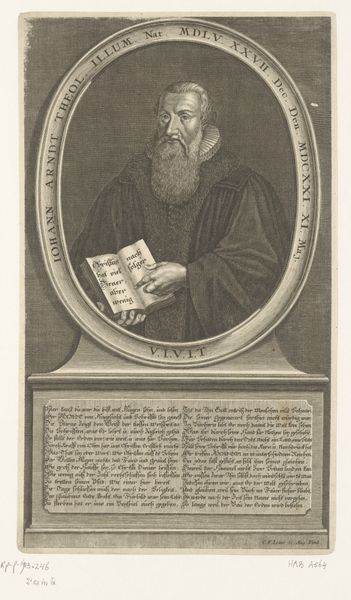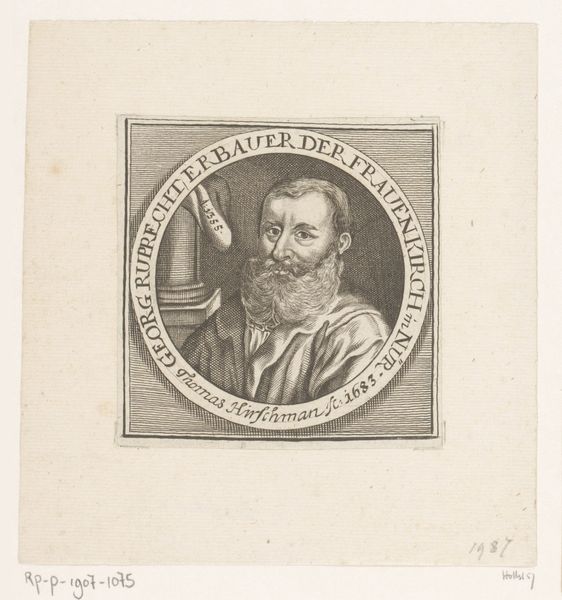
print, engraving
#
portrait
#
baroque
# print
#
engraving
Dimensions: height 162 mm, width 104 mm
Copyright: Rijks Museum: Open Domain
Curator: Our next artwork is a fascinating piece: "Portret van Christoph Leibnitz," an engraving dating from sometime between 1648 and 1663. Editor: Intriguing. The first thing that strikes me is the portrait's graphic intensity, that intricate web of lines defining the face within the oval. It creates a striking, almost austere image. Curator: Absolutely, but consider the social context. The portrait was executed as a print. How does this potentially position Leibnitz as someone of means, accessible through the networks of print culture? We must remember who commissioned, who produced, and the role it played in that society. Editor: An interesting perspective. Although it appears austere, notice the carefully chosen compositional elements and semiotic features within the oval. For example, how does that elaborate collar play against the darker, solid fabric of his jacket? Doesn't that draw your eye up towards the inscribed phrase encircling the portrait? Curator: That framing inscription reveals to us the subject’s standing—'Senior Aetatis’ Diaco. Senior and Christophorvs Leibiniz Ecclesiae Christi', all speak to an identity defined by religion, by social hierarchies, and age, each shaped and informed by production values available during the Baroque. Editor: But the balance! The darkness of his clothing anchored by that bright circle creates tension that makes us study his face so intently. Think of it as a window, carefully placed to encourage the gaze to explore both structure and its detail. Curator: Consider this further, then. A printed portrait like this isn't about celebrating one person. Rather, it communicates that person's status in ways legible to all others—engraving’s comparative reproducibility democratizing visibility but still shaped by unequal relationships of access to capital. It's about conveying the socio-political conditions. Editor: I appreciate your viewpoint on production, although what captivates me lies in how skillfully the portrait has distilled both individual character and, more crucially, how skillfully it establishes our relationship with the gaze of Leibiniz. A masterwork of Baroque artistry, don't you agree? Curator: While that is very compelling, considering the material realities really expands the depth to appreciate the portraits true influence, allowing a better glimpse into its society!
Comments
No comments
Be the first to comment and join the conversation on the ultimate creative platform.
